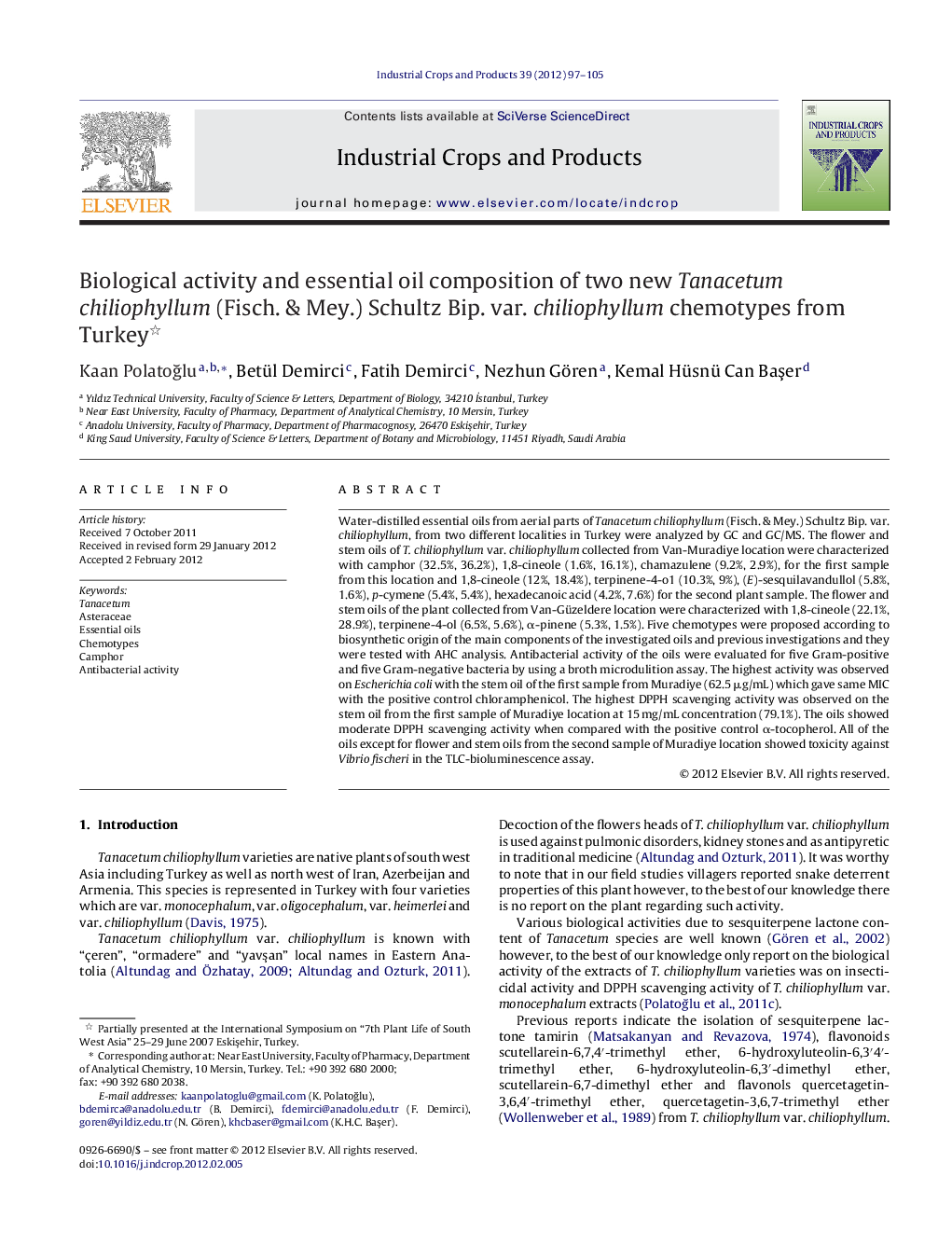| Article ID | Journal | Published Year | Pages | File Type |
|---|---|---|---|---|
| 4514320 | Industrial Crops and Products | 2012 | 9 Pages |
Water-distilled essential oils from aerial parts of Tanacetum chiliophyllum (Fisch. & Mey.) Schultz Bip. var. chiliophyllum, from two different localities in Turkey were analyzed by GC and GC/MS. The flower and stem oils of T. chiliophyllum var. chiliophyllum collected from Van-Muradiye location were characterized with camphor (32.5%, 36.2%), 1,8-cineole (1.6%, 16.1%), chamazulene (9.2%, 2.9%), for the first sample from this location and 1,8-cineole (12%, 18.4%), terpinene-4-o1 (10.3%, 9%), (E)-sesquilavandullol (5.8%, 1.6%), p-cymene (5.4%, 5.4%), hexadecanoic acid (4.2%, 7.6%) for the second plant sample. The flower and stem oils of the plant collected from Van-Güzeldere location were characterized with 1,8-cineole (22.1%, 28.9%), terpinene-4-ol (6.5%, 5.6%), α-pinene (5.3%, 1.5%). Five chemotypes were proposed according to biosynthetic origin of the main components of the investigated oils and previous investigations and they were tested with AHC analysis. Antibacterial activity of the oils were evaluated for five Gram-positive and five Gram-negative bacteria by using a broth microdulition assay. The highest activity was observed on Escherichia coli with the stem oil of the first sample from Muradiye (62.5 μg/mL) which gave same MIC with the positive control chloramphenicol. The highest DPPH scavenging activity was observed on the stem oil from the first sample of Muradiye location at 15 mg/mL concentration (79.1%). The oils showed moderate DPPH scavenging activity when compared with the positive control α-tocopherol. All of the oils except for flower and stem oils from the second sample of Muradiye location showed toxicity against Vibrio fischeri in the TLC-bioluminescence assay.
Graphical abstractFigure optionsDownload full-size imageDownload as PowerPoint slideHighlights► Two new chemotypes of T. chiliophyllum var. chiliophyllum is determined. ► Main compounds in the oils were chamazulene/camphor and 1,8-cineole/terpinen-4-ol. ► Morphological variations were encountered in the chemotypes. ► Chamazulene/camphor chemotype shown significant activity against B. cereus and E. coli.
